13 Hidden Archaeological Gems In Europe You Need To Visit At Least Once
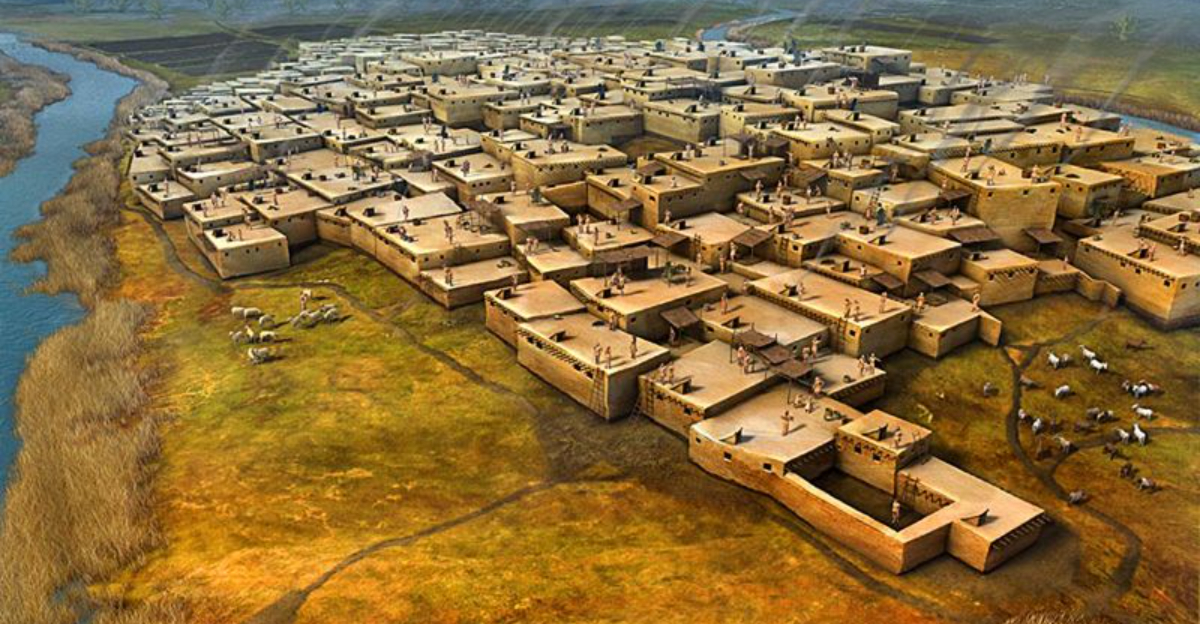
Europe’s rich history isn’t just found in its blockbuster landmarks—it’s scattered across quiet fields, tucked into forested hills, and buried beneath modern cities. If you’ve ever dreamed of stepping back in time without battling tourist hordes, this one’s for you.
Did you know there’s an entire Roman city hidden underneath a Croatian town square? Or that a prehistoric temple older than the pyramids lies on a tiny Mediterranean island? These lesser-known sites may not be in every travel brochure, but they offer something even more magical: a sense of discovery.
I’ve wandered through mossy ruins in Ireland where druids once stood, and climbed forgotten staircases carved by ancient hands in Spain. Trust me—these hidden archaeological gems are where history feels personal. Ready to explore the side of Europe most travelers miss?
1. Carnac Stones, France

Over 3,000 prehistoric standing stones stretch across the Breton countryside in mysterious alignments that have puzzled archaeologists for centuries. These megalithic monuments, dating back to around 3300 BCE, form the largest collection of such stones in the world.
Walking among these ancient sentinels feels like stepping into a forgotten world where druids might have once performed sacred rituals. The stones vary in size from small markers to towering monoliths over 20 feet tall.
Visit during early morning or late afternoon when the golden light creates dramatic shadows between the stones, making the experience truly magical and photogenic.
2. Akrotiri, Greece
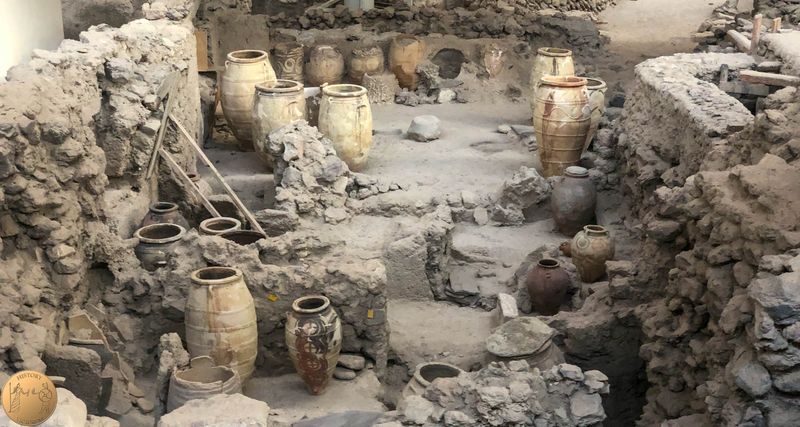
Buried beneath volcanic ash for over 3,600 years, this Bronze Age settlement on Santorini offers a perfectly preserved snapshot of ancient Minoan life. Unlike Pompeii, Akrotiri shows no signs of panic or sudden death, suggesting residents had time to evacuate before the catastrophic eruption.
Remarkably intact frescoes still decorate the walls, depicting dolphins, monkeys, and elegant women in flowing robes. Multi-story buildings with sophisticated drainage systems reveal an advanced civilization that thrived long before classical Greece.
The covered excavation site protects visitors from the elements while allowing close examination of this extraordinary time capsule from the ancient world.
3. Skara Brae, Scotland
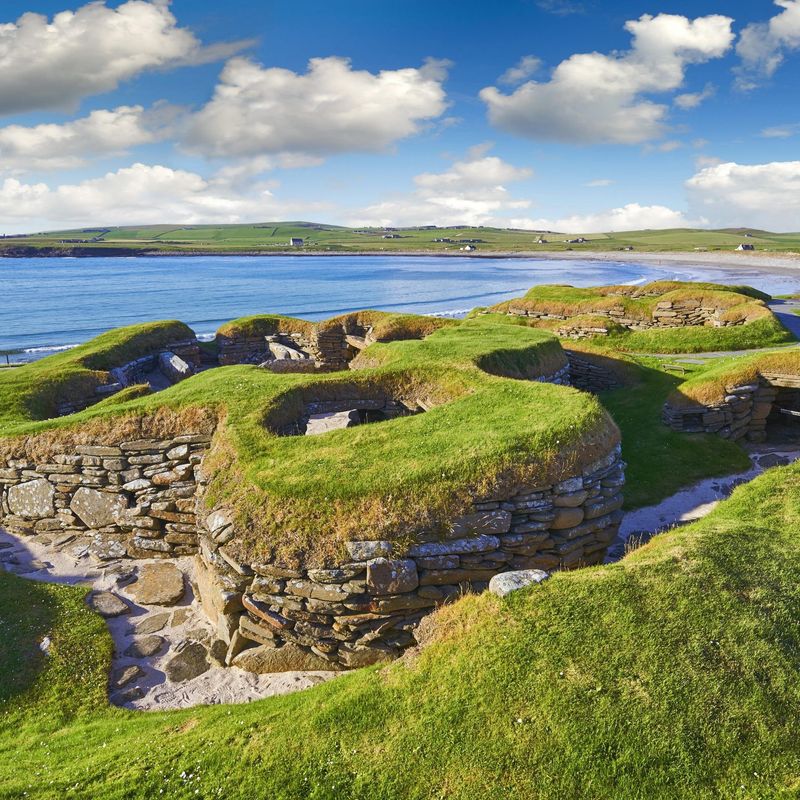
When a violent storm stripped away sand dunes in 1850, it revealed Europe’s most complete Neolithic village, older than Stonehenge and the Egyptian pyramids. Eight remarkably preserved stone houses show how people lived 5,000 years ago in Scotland’s Orkney Islands.
Each dwelling contains stone furniture including beds, dressers, and hearths, all crafted from local flagstone. Connected by covered passages, the village design protected inhabitants from harsh Atlantic weather while fostering community life.
The visitor center provides excellent context before you explore the actual ruins, where you can peer into ancient homes and imagine daily life in prehistoric Scotland.
4. Newgrange, Ireland
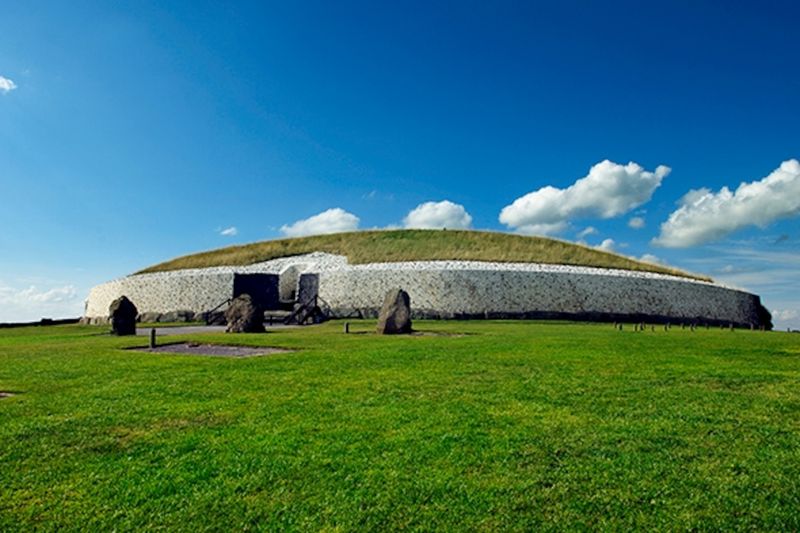
Built around 3200 BCE, this passage tomb predates Stonehenge by 1,000 years and showcases the astronomical knowledge of Ireland’s ancient builders. The massive circular mound contains a narrow passage leading to a cruciform chamber decorated with mysterious spiral carvings.
Every winter solstice, sunlight penetrates the roof-box above the entrance and illuminates the inner chamber for exactly 17 minutes. This precise solar alignment demonstrates sophisticated understanding of celestial movements by Neolithic peoples.
Advance booking is essential for solstice viewing, but year-round visits include a simulated light show that recreates this ancient phenomenon inside the atmospheric burial chamber.
5. Dolmens of Antequera, Spain
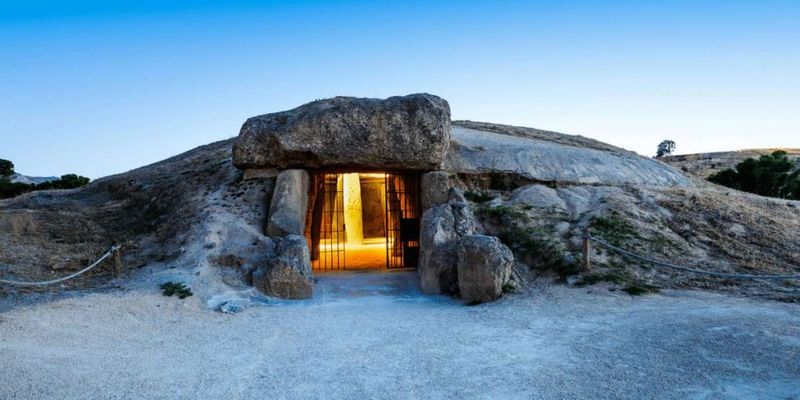
Three megalithic monuments in Andalusia represent some of Europe’s finest examples of Neolithic architecture, with massive stone slabs forming burial chambers that have stood for over 5,000 years. The largest, Menga dolmen, weighs an estimated 180 tons and required sophisticated engineering to construct.
Each structure aligns with natural landmarks – mountains and rock formations – suggesting ancient peoples integrated their monuments with the surrounding landscape. Intricate carvings and paintings adorn some interior walls, adding artistic beauty to functional burial spaces.
The site museum explains construction techniques and cultural significance while panoramic views from the hilltop location showcase the relationship between human-made monuments and natural geography.
6. Gough’s Cave, England

Hidden within Cheddar Gorge, this limestone cave system revealed Britain’s oldest complete human skeleton, known as Cheddar Man, dating back 10,000 years. Recent DNA analysis revealed surprising details about the appearance and lifestyle of Britain’s earliest inhabitants.
Evidence suggests the cave served as both shelter and ceremonial site for Paleolithic peoples who practiced sophisticated tool-making and possibly ritualistic cannibalism. Carved bones and worked flint tools provide insights into survival strategies during the last Ice Age.
Guided tours combine archaeological discoveries with stunning geological formations, while the nearby museum displays actual artifacts found within the cave system, including the famous Cheddar Man reconstruction.
7. Goseck Circle, Germany

Discovered through aerial photography in 1991, this 7,000-year-old circular enclosure represents one of Europe’s earliest solar observatories, predating Stonehenge by 2,000 years. Wooden posts and earthen banks form precise alignments with winter and summer solstices.
Archaeological evidence suggests Neolithic farmers used this site to track seasonal changes crucial for agricultural planning. The circular design with specific gateway openings allowed observers to mark the sun’s position throughout the year with remarkable accuracy.
A full-scale reconstruction now stands near the original site, allowing visitors to experience how ancient astronomers tracked celestial movements. Information panels explain the sophisticated mathematical knowledge required to create such precise solar alignments.
8. Varna Necropolis, Bulgaria

Dating to 4600-4200 BCE, this ancient cemetery revealed the world’s oldest worked gold artifacts, revolutionizing understanding of prehistoric social hierarchies and wealth accumulation. Grave 43 contained a man buried with over 990 gold objects, indicating sophisticated metalworking skills and social stratification.
The discovery challenged assumptions about egalitarian prehistoric societies, showing that social classes and wealth concentration existed much earlier than previously thought. Elaborate grave goods include gold diadems, axes, and decorative appliqués of extraordinary craftsmanship.
Varna Archaeological Museum displays the spectacular golden treasures alongside explanations of burial practices and social organization in Europe’s earliest complex society, making this a must-see destination for understanding prehistoric civilization.
9. Hal Saflieni Hypogeum, Malta
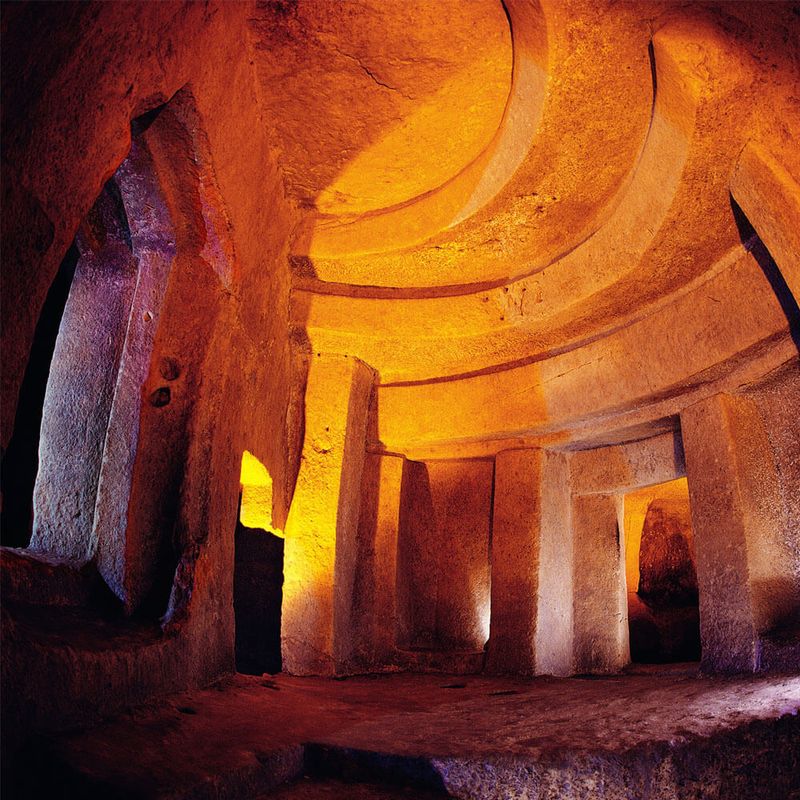
Carved entirely from solid limestone around 4000 BCE, this underground temple complex represents one of the world’s best-preserved prehistoric sites. Three levels of chambers, halls, and passages extend deep into the earth, created using only stone and bone tools.
The remarkable acoustic properties of certain chambers suggest ritual use, with specific frequencies that may have induced altered states of consciousness during ancient ceremonies. Intricate red ochre paintings and carved decorations adorn the walls throughout the complex.
Limited to only 80 visitors daily, advance booking months ahead is essential for this UNESCO World Heritage site. The experience includes detailed audio guides explaining the significance of this unique underground sacred space.
10. Externsteine, Germany
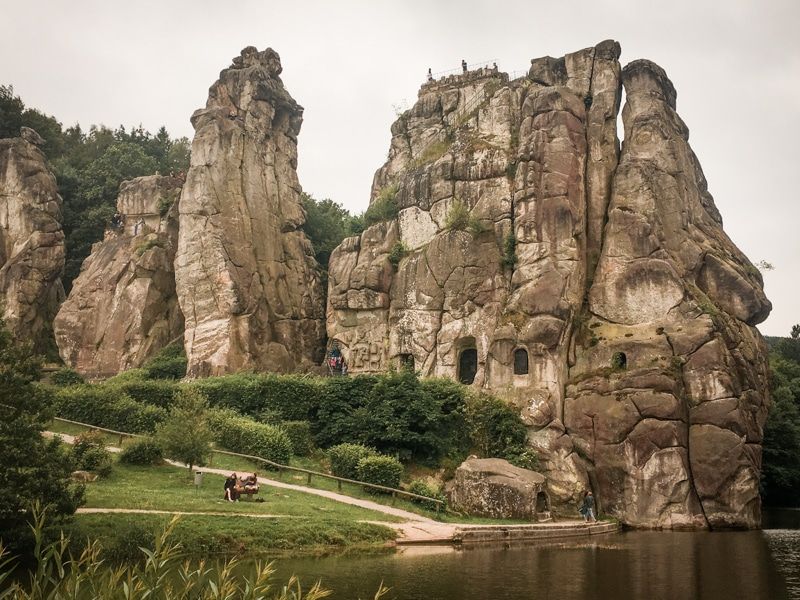
These towering sandstone pillars in the Teutoburg Forest have served as sacred sites for over 1,000 years, with evidence of both pagan and Christian use. Medieval monks carved elaborate reliefs into the rock face, including a famous depiction of the Descent from the Cross.
Archaeological evidence suggests the site held religious significance long before Christianity arrived, possibly serving as a Germanic sanctuary. The highest pillar contains a circular chamber with a window aligned to catch moonlight during specific lunar phases.
Climbing the narrow steps to the summit chamber provides spectacular forest views while pondering the site’s mysterious blend of natural wonder and human spiritual expression across multiple cultures and centuries.
11. Boyne Valley, Ireland

This landscape contains over 90 monuments spanning 5,000 years of human history, making it one of Europe’s most important archaeological complexes. Beyond famous Newgrange, lesser-known sites like Dowth and Knowth offer equally spectacular passage tombs with unique features.
Knowth contains the largest collection of megalithic art in Western Europe, with over 200 decorated stones featuring spirals, circles, and abstract patterns. The site includes satellite tombs and evidence of continuous occupation from Neolithic times through medieval periods.
A comprehensive visitor center provides context before exploring multiple sites via guided tours. The combination of monuments, landscape, and river setting creates an immersive experience of ancient Irish civilization.
12. Çatalhöyük, Turkey

Though technically straddling Europe and Asia, this 9,000-year-old settlement represents one of humanity’s earliest urban experiments and deserves inclusion for its revolutionary insights into prehistoric life. Houses built directly against each other created a honeycomb-like structure with rooftop access only.
Wall paintings depicting hunting scenes, geometric patterns, and possible religious imagery provide rare glimpses into Neolithic artistic expression and belief systems. The absence of streets or obvious social hierarchy challenges assumptions about early urban development.
Active excavations continue revealing new discoveries while a excellent visitor center explains daily life in this proto-city. The site demonstrates how humans first experimented with dense community living thousands of years ago.
13. Avebury, England
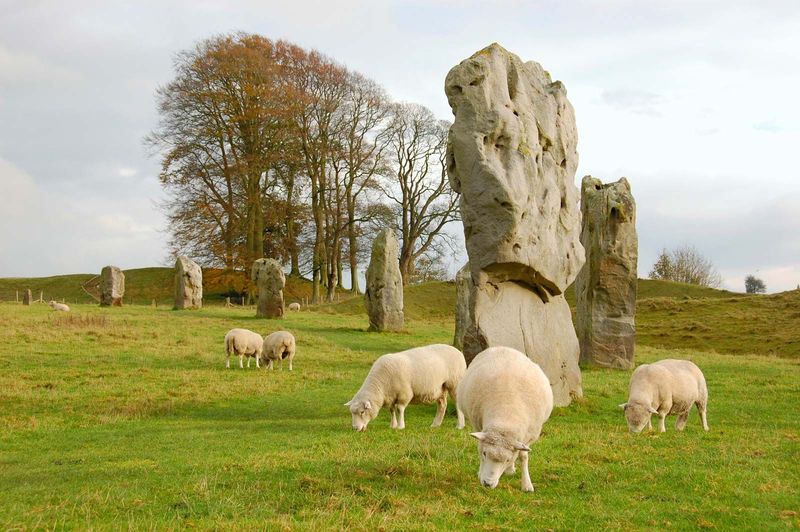
While overshadowed by nearby Stonehenge, this massive stone circle actually contains the largest megalithic monument in Europe, with a circumference of nearly a mile. The henge encompasses an entire village, allowing visitors to walk among 5,000-year-old standing stones while grabbing lunch at the local pub.
Two smaller circles sit within the main ring, connected by stone avenues that once extended for miles across the Wiltshire landscape. The scale and complexity suggest this was a major ceremonial center for ancient British peoples.
Unlike Stonehenge’s restricted access, you can touch these ancient stones and explore freely. The juxtaposition of prehistoric monuments with modern village life creates a uniquely atmospheric experience of living history.
